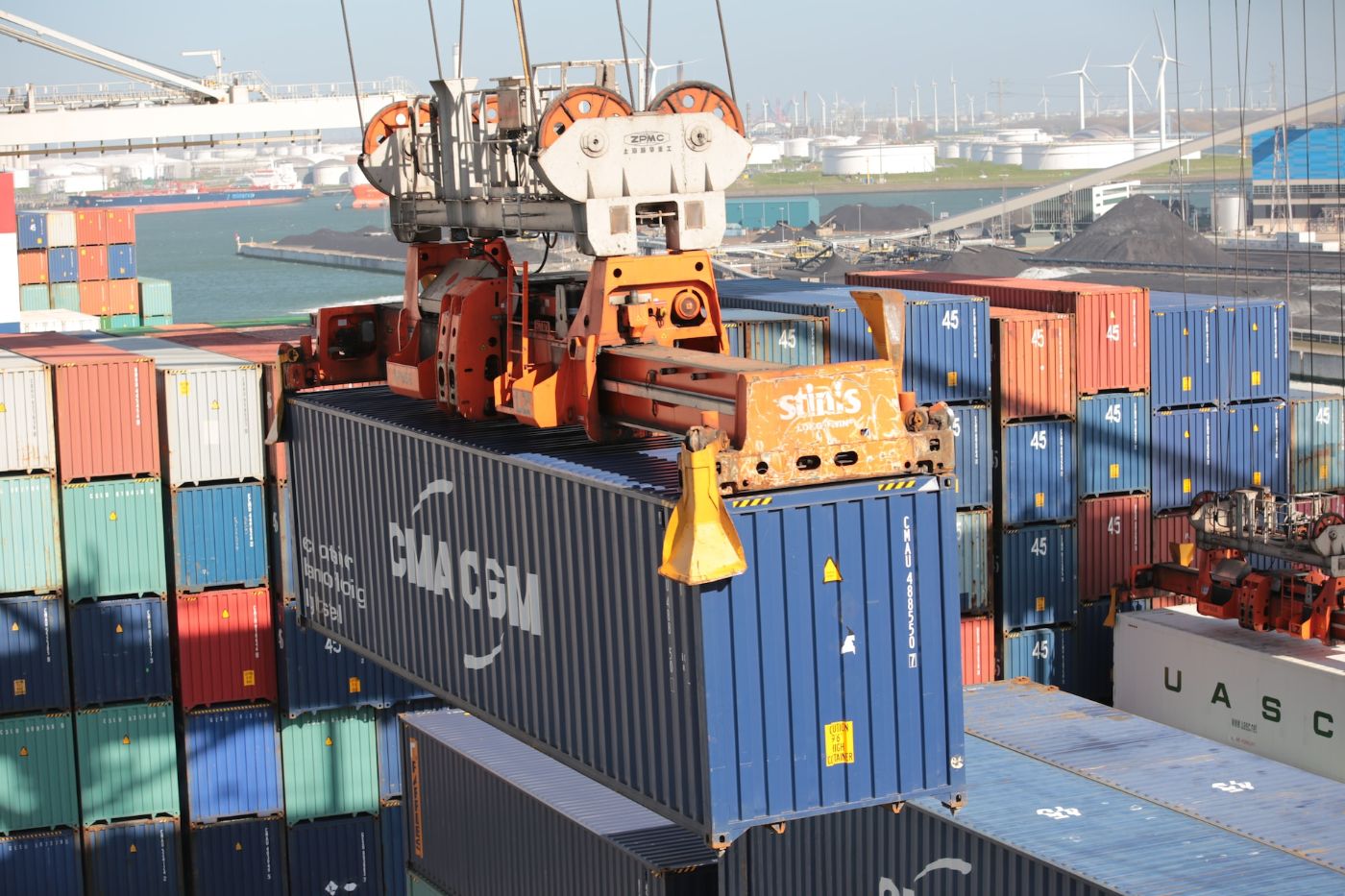The Cheapest Way to Ship a Boat From Florida (All Types)
Relying on a professional boat transporter is the most convenient way to ship your boat from Florida. However, it is not always budget-friendly, especially for long-distance shipping. For this reason, we've explored some of the cheapest ways to ship a boat from Florida and provided tips to help you save money on your boat transport.
The cheapest ways to ship a boat from Florida include using a drive-away service, a flatbed trailer, RoRo shipping, shared shipping, and freight shipping. You can also hire a delivery captain or choose an open carrier. You can also do DIY boat shipping if you have previous boat hauling experience.
Additionally, you can utilize a boat transport marketplace like uShip to get quotes from multiple boat transporters, so you can compare prices and choose the most affordable option. Let's take a look at other cost-effective options to ship a boat from Florida, which can surely help you save tons of money.
Summary
- The cheapest option to ship your boat from Florida is a DIY boat transport.
- An open carrier is cheap, but it exposes your boat to the elements and theft.
- Hiring a delivery captain is a cheaper option than hiring a transporter.
- Shared shipping is affordable, but there are possible risks of boat damage.
- Get quotes from multiple boat transporters, so you can get the cheapest deals.

Cheapest Ways to Ship a Boat From Florida
Shipping a boat can be a costly endeavor, but there are ways to cut the expense. Here are some of the cheapest ways to ship a boat from Florida:
| Shipping Method | Estimated Cost |
|---|---|
| Driveaway service | $1,000 - $2,500 |
| Flatbed trailer | $1,500 - $3,500 |
| Roll-On/Roll-Off (RoRo) | $1,000 - $3,000 |
| Open carrier | $1,000 - $4,000 |
| Freight shipping | $2,000 - $7,000 |
| Shared shipping | $1,500 - $4,000 |
| DIY Boat shipping | $500 - $1,000 |
| Delivery captain | $500 - $1,500 per day plus expenses |
1. Using a driveaway service is an affordable way to ship a boat
A driveaway service can be a good option for those looking to ship a boat from Florida on a budget, as long as the boat is not too large or heavy and the destination is within the service area. This involves hiring someone to drive your boat to its destination. While it may take longer than other shipping methods, it can be significantly cheaper.
Pros of a driveway service:
- Driveaway service is generally less expensive than other shipping methods, such as freight shipping or a delivery captain.
- The drivers who provide driveaway services are typically experienced and licensed to operate the type of vehicle needed to transport your boat.
- They offer more flexibility in terms of scheduling and route planning compared to other shipping methods.
Cons of a driveway service:
- Driveaway services are not available in all areas, and may not be able to transport your boat to certain locations.
- While they typically have liability insurance to cover damages during transport, they may not offer the same level of protection as other shipping methods such as freight shipping or a delivery captain.
-They may not be able to transport boats that are too large or heavy for their vehicles.
2. Shipping via a flatbed trailer can help protect your boat at a cheaper rate

If your boat is small enough, you may be able to transport it on a flatbed truck. This method is more expensive than open carriers, but it offers more protection for your boat and is less visible to potential thieves.
Pros of a flatbed trailer:
- Flatbed trailers can be used to transport boats of various sizes and shapes, making them a flexible option for shipping boats.
- Boats transported on a flatbed trailer are usually well-secured and protected from the elements during transport.
- The drivers who provide flatbed trailer services are typically experienced and licensed to operate the type of vehicle needed to transport your boat.
Cons of a flatbed trailer:
- Flatbed trailer services can be more expensive than driveaway services or DIY boat shipping.
- Boats transported via trailer will be required additional coverage for the trailer itself, which can add up to the costs.
- Flatbed trailers may not be able to transport boats to certain locations due to road restrictions or other limitations.
3. Roll-On/Roll-Off (RoRo) is a cost-effective option for larger vessels
With this method, your boat is driven onto the shipping vessel and secured in place. Once it arrives at its destination, it is driven off the vessel.
Pros of a Roll-On/Roll-Off (RoRo):
- RoRo shipping is generally less expensive than other shipping methods, such as freight shipping or a delivery captain.
- They can transport large numbers of vehicles and boats at once, making it an efficient option for shipping boats.
- They are usually well-secured and protected from the elements during transport.
Cons of a Roll-On/Roll-Off (RoRo):
- RoRo ships may only operate on certain routes and may not be able to transport boats to certain locations.
-While RoRo ships typically have liability insurance to cover damages during transport, they may not offer the same level of protection as other shipping methods such as freight shipping or a delivery captain. - They may not operate on a regular schedule, making it difficult to plan a shipment with certainty.
4. Open Carrier offers the cheapest way to ship a boat
Open Carrier is a method of shipping a boat where it is transported on an open trailer, without any protective covering. This method of shipping is generally cheaper than other options, such as enclosed transport or container shipping, but it also comes with some potential risks and drawbacks.
Pros of open carrier shipping:
- Open Carrier shipping is usually the most affordable option for shipping a boat, as it does not require any special equipment or a protective covering.
- The boat is easily accessible for loading and unloading, which can save time and hassle.
- The boat is visible during transport, which can provide peace of mind for some boat owners who want to keep an eye on their vessel.
- Open Carrier shipping can accommodate larger boats that may not fit in an enclosed trailer or container.
Cons of open carrier shipping:
- The boat is exposed to weather conditions during transport, which can lead to damage or wear and tear.
- The boat is visible during transport, which can make it a target for theft.
- The boat is not protected from debris or other hazards on the road, which can cause damage.
- Some insurance policies may not cover damage that occurs during open carrier shipping or may have lower coverage limits.
5. Freight shipping is an inexpensive way to ship a boat from Florida

Freight shipping is a cost-effective way to transport your boat over long distances. Freight shipping companies specialize in transporting large, heavy items, like boats, and can offer lower rates than other shipping methods.
Pros of freight shipping:
- Freight shipping rates are generally lower than other shipping methods, especially if you have a large boat.
- Freight shipping companies also have experience handling large, heavy items, so you can be confident that your boat will be transported safely and securely.
- They also offer a range of options for transporting your boat, including door-to-door delivery, port-to-port delivery, and more. You can choose the option that best fits your needs and budget.
Cons of freight shipping:
- Freight shipping can take longer than other shipping methods, especially if you're shipping your boat over a long distance.
- There might be a lack of control over the shipping process. When you ship your boat with a freight shipping company, you're entrusting your boat to a third party. While most freight shipping companies are reputable and reliable, there's always a risk of damage or loss during transport.
6. Shared shipping or multi-boat transport helps you save money when shipping your boat
If you know other boat owners who need to ship their boats, you could consider multi-boat transport. This involves sharing the cost of shipping between multiple boats, which can significantly reduce the cost per boat.
Pros of shared shipping:
- One of the main advantages of shared shipping is the cost savings. Since the cost is shared between multiple boat owners, it can be significantly cheaper than shipping your boat alone. This is especially true if you have a smaller boat, as the cost of shipping a smaller boat can be quite high.
- Another advantage of shared shipping is the reduced environmental impact. When multiple boats are shipped together, it reduces the number of trips that need to be made, which can help to reduce fuel consumption and emissions.

Cons of shared shipping:
-
One of the main disadvantages of shared shipping is the lack of control over the shipping process. When your boat is shipped with other boats, you may have to wait until all the boats have been loaded before your boat can be shipped. This can result in delays and can be frustrating if you have a tight schedule.
-
Another disadvantage of shared shipping is the potential for damage to your boat. When your boat is shipped with other boats, there is a higher risk of damage due to shifting during transit. While most shipping companies take precautions to prevent damage, accidents can still happen.
7. DIY boat shipping is the cheapest option to ship your boat
DIY boat shipping involves renting a trailer or a truck and hauling your boat to its destination. Here are some pros and cons of DIY boat shipping:
Pros of DIY boat shipping:
- DIY boat shipping can be significantly cheaper than hiring a professional boat transportation company. You only need to pay for the rental of a trailer or truck, fuel, and any tolls or permits required for the trip.
- When you ship your boat yourself, you have more control over the shipping process. You can choose the route you want to take, the speed you want to travel, and the stops you want to make along the way.
- DIY boat shipping can be a great learning experience. You will learn how to load and secure your boat properly, how to navigate highways and local roads, and how to handle unexpected situations.
Cons of DIY boat shipping:
- This method can take a lot of time. You need to plan your route, prepare your boat for transport, and drive to your destination. Depending on the distance, it can take several days to complete the trip.
- If you are not experienced in hauling boats, there is a risk of damage or accidents during the shipping process. Try to make sure your boat is properly secured and that you follow all safety regulations.
- When you ship your boat yourself, you may not have insurance coverage in case of damage or accidents. You need to check with your insurance provider to see if your policy covers DIY boat shipping.
8. Hiring a delivery captain lets you transport your boat in an affordable way
If you don't want to worry about transporting your boat yourself, hiring a delivery captain may be the best option for you. A delivery captain will sail your boat to its destination, and this method is often cheaper than using a transporter.
Pros of hiring a delivery captain:
- A delivery captain has extensive experience in navigating and handling boats, which can be particularly helpful if you're shipping a boat for the first time.
- A delivery captain prioritizes safety and will ensure that your boat is transported safely and securely.
- Hiring a delivery captain can save you time and effort, as they will handle all aspects of the shipping process, including navigation, fueling, and maintenance.
- Most delivery captains are insured, which can provide added peace of mind during the shipping process.
Cons of hiring a delivery captain:
- Delivery captains may have a busy schedule, which can make it difficult to find a time that works for both parties.
- If you're not familiar with the shipping process, you may have difficulty communicating with the delivery captain or understanding the details of the shipping process.
- While delivery captains are insured, there is always a risk of damage or loss during shipping, which can be a concern for some boat owners.
Other Tips to Reduce Shipping Cost

Here are more tips to help you save money on shipping a boat from Florida:
Plan ahead
The cost of shipping a boat can vary depending on the time of year, so the best thing to do is to plan ahead. Shipping during the off-season can often be cheaper than during peak season. Perhaps consider booking your shipment in advance to help you get a better rate.
Compare prices
Consider getting quotes from multiple boat transporters to compare prices and services. You can use online shipping calculators or contact transport companies directly to get a quote. You may also ask about any discounts they offer for multiple boat shipments or during off-peak seasons.
Prepare your boat
Preparing your boat for transport can help reduce the cost of shipping. This includes removing all personal items, draining fluids, and securing loose items. Transport companies may charge extra fees for these tasks, so doing them yourself can save you money. If you don't know how to prepare your boat before transport or shipping, you can refer to this article for a more detailed guide.
Consider alternative transport methods
If your boat is small enough, you may be able to transport it using a trailer. This can be a cheaper option than hiring a professional boat transport company. However, you might want to make sure your vehicle is capable of towing your boat and that you have the necessary permits.
Choose the right transport method
There are several different ways to transport a boat, including by truck, rail, or ship. Choosing the right method can help you save money and time. For example, transporting a boat by sea is the fastest method for long distances. However, if you're choosing between shipping by road or by rail, transporting by rail is a good option for longer distances, but for shorter distances, you can go by road.
Did you find the answer to your specific question?
👍 0 👎 0




Leave a comment